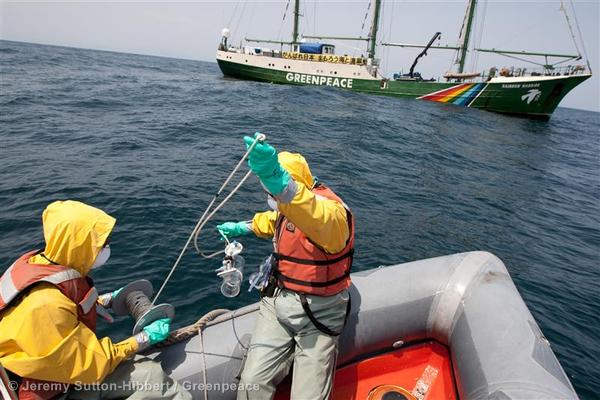
The most dangerous industrial cleanup of recent years is entering a complex stage at the Japanese plant, a transition that has been highlighted by a recent chain of incidents resulting in ongoing leaks from storage tanks, human error forcing cooling technology to cease and six workers being doused in contaminated water at the desalination facility.
As TEPCO fails to address the many technical challenges in various aspects of the clean-up, the environmental, economic and social ramifications for Japan continue to grow. With incidents continuing to happen and news of the highest spike in radiation following a second large leak at the Fukushima Daiichi plant since the triple meltdown first occurred in March 2011, it seems appropriate to reassess the situation, ask what is being done to solve the ongoing crisis and how it is likely to impact us.
There have been mixed media reports on how safe seafood reaching U.S. markets is for consumption. Scientific studies conducted off the coast of San Diego by Stanford University on Pacific Bluefin Tuna, Thunnus orientalis, showed every single tuna tested was contaminated with radioactive isotopes of cesium. The levels detected were below legal limits, however, the National Academy of Sciences, raised an important point that even the smallest dose of low-level ionizing radiation has the potential to cause a small increase in human health risk, and that it is unlikely there is a threshold below which cancers are not induced. All food produce arriving from overseas is continually monitored by the U.S. Customs and Border Protection agency along with the U.S. Food and Drugs Administration (FDA). The FDA has currently banned agricultural and fishery imports from 14 prefectures around Japan, with other countries also ceasing imports from selected prefectures.
Although less and less contamination is being found in Japanese seafood at ports and supermarkets, one of the major challenges is identifying the source and therefore potential contamination levels of tinned and processed seafood. This is particularly problematic as national laws do not require fish species, catch location, or time to be stated on packaging. Greenpeace Japan has done a lot of collaborative work with major supermarkets on this issue to try and improve safety standards.
Solutions to prevent the leak have been thwarted by various obstacles. The stop–gap solution to contain the already contaminated water in storage tanks has caused numerous incidents on site, due to faulty containers and tanks being over filled. The proposed long-term solution is to install an ice-wall around the Fukushima reactors 1-4, a project expected to cost around $470m, and one which has never been attempted on this scale or under such sensitive circumstances before. It will attempt to tackle the source of contamination entering the ocean by preventing groundwater from flowing down from the hills surrounding the plant and mixing with contaminated cooling water.
Although the outcome of decommissioning efforts for the plant remain uncertain, there are a number of actions we can take to ensure calamities such as this occur with less intensity and less frequently, moving us toward a more sustainable energy future. We should see this as a major wake up call about the true costs of nuclear power, and raise concerns to those making the choices on our behalf. Head to our campaign page for No More Nukes to find out more and support Greenpeaces efforts for a safe and sustainable energy future!
We can also see this disaster as an opportunity to seek out transparent and more informed decisions about the source of our seafood overall. Without a healthy marine ecosystem, we cannot obtain a sustainable source of healthy fish. To find out more on this issue and to see where your local supermarket ranks, see Greenpeaces Carting Away The Oceans page.
Take action today, to ensure Fukushima does not happen again!
Have more questions? Check out our FAQ page on Fukushima.
